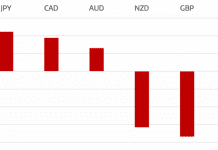
12 Top Blockchain Predictions Part 2
By Dinis Guarda with Hernaldo Turrillo and input from Outlier Ventures team
Blockchain revolution is still going. In the first entry of this two part article, we went through some of the 6 mainstream top blockchain predictions. We highlighted how blockchain is now a trusted game changer, and how the industry, and multicple sectors and markets are now using DLT solutions and changes in Governments, central banks, enterprise solutions and others. In this second part we are going to check out the our 6 remaining blockchain predictions. From the token market, Facebook Libra, Ethereum, Privacy Tools, blockchain interoperability and regulators getting to blockchain and digital assets there will be lots of changes, with developments and valuations based on traction and the ways the industry will work and collaborate.
These are the top blockchain predictions in a part 2:
7. The token market will be cleaned up
The big story throughout 2020 will be ‘The Reckoning’. Despite the longish bear market, aggregate total market capitalisation of all cryptoassets being down 88% from an all time high in January 2018 for the vast majority of projects, are still not reflective of network activity or development progress.
As exchanges are forced to increasingly professionalise, ‘zombie tokens’ will be more aggressively delisted and investors will gradually flock to quality. The idea of projects worth $100 million without product-market fit will go away. Valuations can no longer be sustained by just a vision and an idea. 2020 will all be about traction and usage. And not just press release partnerships, beta releases, and funding rounds. An example is the Brave Browser level 10 million monthly active users traction.
Prediction: More than 5 new indices will launch in 2020 onboarding >$5 billion (source Outlier Ventures team)
8. Facebook’s Libra will launch even if with very limited functionality
Like it or hate it Facebook has been driving the world technology and regulation forums. Not always by the best reasons but there is no doubt of the power of Facebook disruption. And Facebook was the major technology players after Microsoft to put Blockchain technology (even in divergent ways of looking at it) in the main stages. So if 2019 saw the world biggest social network corporation propose the first blockchain digital currency in a mainstream stage we will see it finally launch. Facebook’s major ambitious payment network initiative even if with a mountain of resistance from regulators both in the U.S. and in Europe has been slowly developed, shying away from media attention and moving forward. Proof of that is Facebook GitHub repository that has regular development commits and activity. The expectation are that that Libra will effectively launch in one jurisdiction and with very limited scope, partners and functionality. It will not be the payment rails and onboarding vehicle that it promised originally but still will show signs of progress.
Prediction: Facebook Libra will go live, love it or not.
9. Ethereum won’t get more apps, but decentralized finance will continue to be hot
We expect layer 2 adoption opening up use cases beyond crowdfunding and DeFi. Expect to see games currently using EOS and Tron to migrate over to Ethereum to take advantage of the DeFi lego available. With the development of MAST/Taproot on the Bitcoin network as well as the influx of new smart contracting platforms reaching mainnet in 2020, we are likely to continue to see a stable pool of developers spread over ever more platforms. Leading to fewer new dapps being built on Ethereum, but with a select few DeFi apps like Maker and Compound driving an increase in monthly active users and value locked up in contracts. The prediction that is hard to make is whether a break-out application using DeFi lego building blocks entrenches Ethereum as the base layer or if interoperability projects like GEO Protocol and others reduce the importance and value of the base layer over time.
Prediction: Total value locked up in Ethereum DeFi will surpass 1 billion dollars in 2020 (source Outlier Ventures team)
10. Expansion of blockchain privacy tools and oracles
We are seeing the maturity of blockchain privacy tools and the so called oracles. Multiple companies are working on this like Ernst & Young that are investing heavily into the development of privacy tooling. An example is the one developed for the public Ethereum ecosystem and their product called Nightfall is a great example of how one day all the enterprises will be using the public mainnet for transactions with enough privacy comfort. Being a blockchain oracle an agent that finds and verifies real-world occurrences and submits this information to a blockchain to be used by smart contracts there will be multiple opportunities for the growth of these innovative features for the blockchain tech . We will see more zero-knowledge (ZK) and multi-party computations (MPC) projects maturing and entering the blockchain space. If VC funding of startups is considered a metric, then MPC should be the number-one hot area. Hardware oracles normally include IoT and RFID sensors and barcodes. The information they capture is brought into a blockchain-based supply system, giving users a full suite of information. Software oracles are data feeds that are incorporated into the blockchain system to trigger events or decisions. Chainlink for example has tokenized its network of oracles to handle the problem of provenance, so often the weak link in any supply chain. As human oracles can also enter data into a smart contract, Chainlink has developed an intriguing way to help ensure data validity. Chainlink has continued with strong partnerships and integration with new services.
Prediction: Growth of blockchain privacy tools and oracles solutions
11. More interoperability between blockchains protocols
With the move of Hyperledger Besu, a native Ethereum client developed by PegaSys, to the Linux Foundation’s Hyperledger initiative we saw a significant sign that the permissioned blockchains will continue to converge. The differences between the major blockchain protocols like Quorum, Besu, Fabric and Corda remain still significant but there is an open dialog for collaboration and research into how assets on different chains can co-exist. In 2019 we saw the multi-cloud blockchain deployments so won’t be surprised to see successful cross-blockchains pilots in 2020.
Prediction: Blockchain protocols will have much more interoperability.

12. More regulators will open to blockchain and digital currency solutions
Regulators all over the world are finally doing their homework and understanding the possibilities of blockchain technology and related solutions such smart contracts, ID, financial solutions, digital assets, tokenisation. Regulators such as Switzerland, Singapore, Malta, Gibraltar, Wyoming have laid out the groundwork for blockchain, digital assets and a digital-banking-friendly regulatory regime. With the separation of blockchain solutions and digital assets there are a lot of possibilities in the blockchain and digital assets, tokenisation front. With the case of separating into three distinctive categories, Wyoming for example is explaining the differences between virtual currencies and digital securities, all deemed intangible personal property. But Wyoming’s blockchain work didn’t go unnoticed as other regulators in Colorado, New Mexico and Arizona are also looking into similar legislative work.
Prediction: Regulators will open to blockchain and new digital assets solutions.
Conclusion
Overall, the next years will see a new wave of maturity for the blockchain and related solutions technology and related financial digital assets industry. And the situation is shaping up with increasing maturity for the blockchain technology and digital assets ecosystems. There is no doubt of the growth of DLT industry and its blockchain protocols, tokenisations and digital assets new innovations and solutions continue to grow in usage, metrics and adoption rates. But the industry as a whole needs to work aligned with both technology players, governments, regulators and special create solutions that work.
The first part of our blockchain predictions are in 12 Top Blockchain Predictions

Dinis Guarda is an author, academic, influencer, serial entrepreneur and leader in 4IR, AI, Fintech, digital transformation and Blockchain. With over two decades of experience in international business, C level positions and digital transformation, Dinis has worked with new tech, cryptocurrencies, drive ICOs, regulation, compliance, legal international processes, and has created a bank, and been involved in the inception of some of the top 100 digital currencies.
Dinis has created various companies such as Ztudium tech platform a digital and blockchain startup that created the software Blockimpact (sold to Glance Technologies Inc) and founder and publisher of intelligenthq.com, hedgethink.com, fashionabc.org and tradersdna.com. Dinis is also the co-founder of techabc and citiesabc, a digital transformation platform to empower, guide and index cities through 4IR based technologies like blockchain, AI, IoT, etc.
He has been working with the likes of UN / UNITAR, UNESCO, European Space Agency, Davos WEF, Philips, Saxo Bank, Mastercard, Barclays and governments all over the world.
He has been a guest lecturer at Copenhagen Business School, Group INSEEC/Monaco University, where he coordinates executive Masters and MBAs.
As an author, Dinis Guarda published the book 4IR: AI, Blockchain, FinTech, IoT, Reinventing a Nation in 2019. His upcoming book, titled 4IR Magna Carta Cities ABC: A tech AI blockchain 4IR Smart Cities Data Research Charter of Liberties for our humanity is due to be published in 2020.
He is ranked as one of the most influential people in Blockchain in the world by Right Relevance as well as being listed in Cointelegraph’s Top People In Blockchain and Rise Global’s The Artificial Intelligence Power 100. He was also listed as one of the 100 B2B Thought Leaders and Influencers to Follow in 2020 by Thinkers360.


































